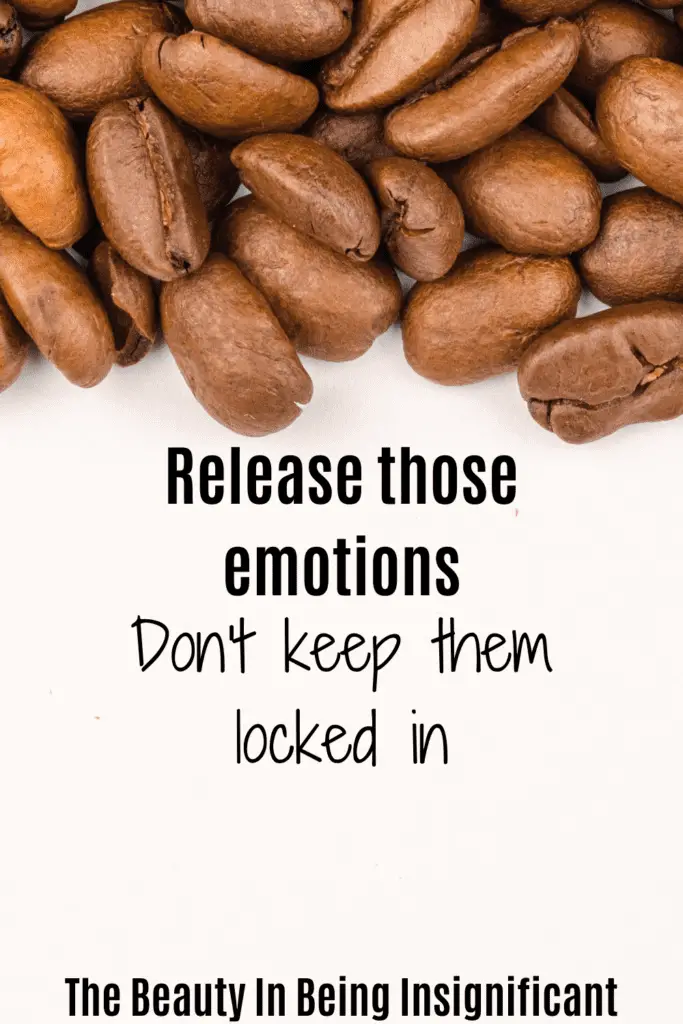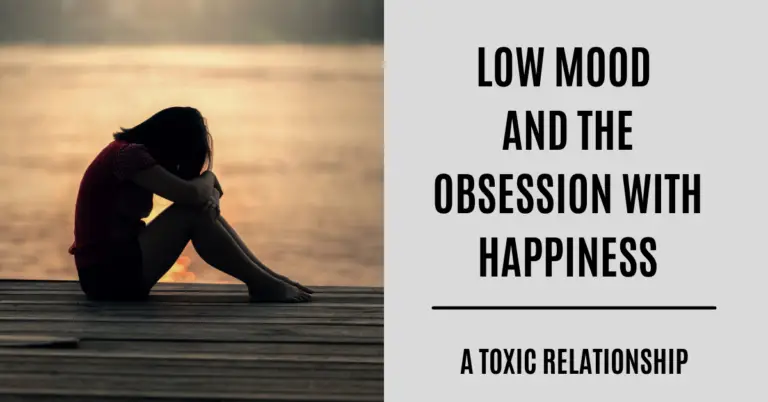How To Feel Better In 5 Steps
The moment of panic. Something anxiety-inducing has just happened to us. The trigger is different for everyone. Kids running about. Rejected from a job. Left by a partner. Failed a course. It doesn’t matter. The reaction is the same. Increased heart rate. Struggling to breathe. Desperately looking for a way feel better. It’s a truly terrifying experience.
Personally, I’ve been here more times than I’d like to admit. Most recently, it was triggered by the mounting workload that was starting to build up. There’s no way it can be done in time. I should just quit. It’s not worth it. In these moments, I used to think that there was nothing that could take these feelings away from me. But I was wrong. Over the years, I’ve managed to gather a few pieces of advice that helped prevent me from going into a deep dark spiral. Today, we’ll be talking about how to feel better in 5 steps.
Table of Contents
1) If you want to feel better, you have to BREATHE.
I want you to try an exercise now. For the next 10 seconds just observe your natural breathing. Whilst doing this, observe how your body feels. Now, change your breathing style to a more rapid and shallow version for another 10 seconds. Notice how your body feels afterwards. I’d bet anything that you were calmer and more relaxed in the first 10 seconds.
Fast breathing usually happens when we’re anxious or panicking. It’s a part of our body’s natural fight or flight reflex. By doing this, our brain is increasing the amount of oxygen we take in making us hyper-aware of danger. It’s actually a very useful coping mechanism IF we were being chased by a lion and needed to escape. Under these circumstances, the extra oxygen goes to your running muscles, our legs, where they get used up. But that’s not what’s going on here.
There is no physical threat to us in moments of anxiety in our daily lives. In our offices. In our bedrooms. The threats are only in our heads. I just know I’m going to get a bad grade after that test. Breathing increases. Then I’m going to fail out of school. Breathing increases even further. Then I’m going to be useless in life and no one will ever love me. Full-blown panic attack. See how easily and quickly you can spiral down?
In these situations, that extra oxygen you’re getting isn’t going anywhere. It’s just building up. Now I know what you’re thinking. Oxygen is a good thing. We need it to survive. How can it be a bad thing? Yes, that’s absolutely true but as the saying goes ‘Too much of anything is toxic’. When there is too much oxygen in our blood, it can cause many symptoms of anxiety. So how do we go back to baseline and make ourselves feel better? Breathe deeply and slowly to restore balance.

Deep breathing is a very effective way of managing stress. Remember that fight or flight reflex I mentioned earlier? Well, changing your pace of breathing helps it calm down. It sends signals to your brain that you’re actually not in any danger. That you are safe. So here’s what I want you to do.
- Sit or lie in a comfortable position
- Place a hand on your chest and the other on your belly
- Take a long, slow breathe through your nose allowing your belly to push your hand out
- Exhale slowly as if you were trying to whistle
- Repeat 5 times
Source: Stress Management: Breathing Exercises for Relaxation | Michigan Medicine (uofmhealth.org)
2) Acknowledge the feeling
Now let’s move on to step 2. Now that you’re hopefully out of the danger zone. You can begin to look inwards. It’s time to name whatever emotion you’re feeling. Is it jealousy? Anger? The truth is that this can be a very difficult task. As humans, we tend to avoid negative emotions like the plague. Instead, we drink, smoke, use whatever addiction we can think of. The highs of those experiences drown out the negative emotions, pushing them further in. But they don’t go away, they never do. They fester, infecting every other aspect of our life, showing its face subtly over time until it explodes. So, what should we do to feel better? Accept these emotions.
Emotional acceptance has several benefits. Firstly, you’re human. I repeat this all the time but you need to hear it. You have emotions. Good ones. Bad ones. By trying to repress what you’re feeling, you’re essentially trying to go against the flow. Want to hear an example of how things go wrong when you go against the flow? Let’s use the rotation of the earth.
Right this moment, we’re actually spinning at incredible speeds dashing through the galaxy. But we’re rotating in one direction. It’s how it has always been. Now let’s reverse things. Let’s go against the flow, just like when we repress our emotions. Let’s switch the direction of our rotation. What happens? Well, our weather patterns all over the planet are messed up. Winter temperature drops by 10 degrees. Massive scores of plant crops die and global hunger ensues. Not very fun at all.
What’s my point? Don’t try to go against yourself. You won’t win. Embrace yourself and whatever you’re feeling. Show yourself some compassion. You’ll feel so much better and won’t regret it.

3) Find the ‘why‘
As you’ve identified what emotion it is you’re feeling. It’s time to find out what triggered the event. The way I see it there are two levels of the ‘why’. There is a surface reason as to why you’re being emotional. This is likely to be the event that just happened. Did you just separate from your partner? Lost a job? Confrontation with overactive kids? Different people have different triggers. These are relatively easy to find. You won’t have to look very far. The difficult task is yet to come. We’re going to have go deeper. We need to understand why these events cause us so much psychological distress.
At this point, you have to go deep. It takes a deep understanding of your self to know these deep wounds. I talk about my experiences trying to find my inner child here
Meeting The Inner Child – How To Know Who You Really Are? – The Beauty In Being Insignificant
It wasn’t a pleasant experience at all. There were many times I had to turn back because I didn’t like what I found. Remember those experiences we tend to keep buried? The festering infection? Well, this is where we face it head on.
A lot of the time when we think we’re triggered by something, it’s really something else that’s bothering us deep down. Feeling jealous about your partner spending time with other people? That could be your low self-esteem acting up. You’re afraid that they might find someone better than you. No matter how many times they reassure you of how great you are. You don’t see it. It’s like trying till a bottomless well. All you see is the negative image you have of yourself and so, you control your partner in the hopes that they don’t leave you for someone else.
You have to find the why. You won’t be able to feel better until you find the root causes of these events. Once you reach them, then you can move on to the next step. Letting go.
4) Let go to feel better
Now that we’ve gone through the trouble of knowing the emotion we’re feeling and why we’re feeling it. We can now let go. I know, I hate when people tell me to just let go. It’s definitely not an easy task. In moments of panic, you’re not thinking logically. You can’t just let go of the emotion. In fact, it’s the other way around. It has its grip on you so tight right now that it’s difficult to breathe. I get it. I’ve been here many times myself. Here is a quick exercise that has always helped me.
- Close your eyes
- Imagine you’re holding a balloon
- Fill that balloon up with all the emotions you’re currently feeling
- Grip the string of the balloon as hard as you can
- Then take a deep breath and let go of the string.
It seems completely trivial but this exercise does wonders for my mood whenever I’m circling a dark downward spiral. Letting go of the string symbolizes releasing all the anxiety. Freeing yourself from the weight of the world that is bearing down on your chest. Releasing the chains that have been dragging you down for so long. It’s a surreal experience. I have often cried after this exercise. Not from sadness, but just to let those emotions that I had kept locked in for so long to be free. Give it a try. No matter how silly you think it may sound. You’ll be surprised at how much better you’ll feel when taking this leap of faith.

5) Reflects – What worked for you?
This has been an emotionally taxing experience for you. Well done for getting through it. But the work isn’t finished. As I like to remind you, you’re human. These experiences are part of the package deal. You can never get rid of them completely. All you can do is equip yourself with the best tools possible so that when the next time comes, you’ll be ready.
However, not every tool works for everyone. We’re incredibly unique as individuals. What worked for me might not work for you. So, my advice is to journal the entire experience once you’re far removed from it. Get a piece of paper, your laptop, iPad, whatever. Write 4 things down.
- How you felt
- Why you felt that way
- What you did to make yourself feel better
- A final word of affirmation for yourself
Here is an entry from my journal.
‘’Today, I felt very anxious because as usual, I have taken on too much work. I did this because I wanted validation from others, not because I actually wanted to do anything of it. I wanted them to like me, because I’m still struggling to like myself. This is okay though. I’m learning and will set new boundaries. I did my breathing exercises along with 10 minutes of meditation, and I feel so much better. I am going to be okay’’
The Insignificant Soul
I’d love to hear from you. Did you find this advice helpful? What situation triggered you most recently and how are you working through it? Let me know in the comments below!





